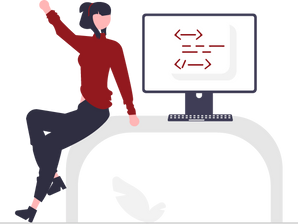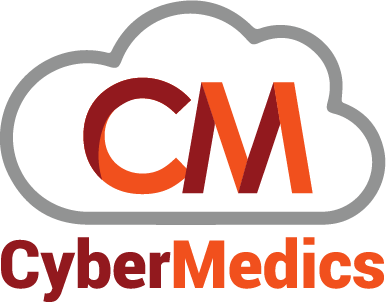
5 Critical Software Development Challenges (+ Solutions)
Looking to kickstart a software project? Keep these five mission-critical software development challenges and solutions in mind for a stress-free project.
At CyberMedics, we often get asked about the challenges our clients face when developing custom software. It’s no secret that software development can be complex and time-consuming – there are a lot of moving parts, and things can (and often do) go wrong.
But don’t despair! While there are definitely challenges involved in custom software development, there are also solutions. In this blog post, look at some of the most common challenges and how to overcome them.
Ready? Let’s go!
Challenge 1: Not enough product development planning
When you’re developing your first software product, it might be tempting to just get started without thinking much through it. Unfortunately, that’s how so many new companies end up losing scope and blowing their budget – because they overlook the meticulous preparation required for software development.
The “Oh yeah, that’s no problem, let’s hammer it out in two days” mentality doesn’t bode well for a project’s success. Next thing you know, things are getting chaotic and it’s getting harder and harder to reach the first milestone let alone the last one.
Solution: Getting your ducks in a row before starting the development phase
Your development team needs a detailed roadmap before they start developing a software product.
Some of the things we ask our own clients are:
Product specifications and scope
The estimated allocated budget
Final product quality expectations
Required technologies and resources for implementation
Possible risks and how you might handle them if the time comes (mitigation strategy)
Communication procedure and project schedule with the completion timeline
While you want to have these things in mind, it’s also wise to remember that you don’t need to stick to the plan at all costs. Any project will end up with a bit of fine-tuning, or even a complete overhaul. However, when you have a clear, well-defined image of the product concept, you can better plan for the kind of expertise needed to start the building phase.
Challenge 2: Vague, volatile project requirements
The thing about custom software development is that it’s, well, custom. Every project is unique, which can make it tough to predict how much time and effort each new project will require. Time and effort fluctuations will increase when you’re working with a client who doesn’t really know what they want (or keeps changing their mind), making it even harder to give them an accurate estimate.
This often leads to the development team scrambling to make changes mid-project, which can result in a lot of wasted time and money.
Of course, there’s also the possibility that sometimes, it’s the volatile market that can cause uncertainty. You might have to change your business goals in a short period of time if you’re working in a market that’s changing fast. In which case, it’s important to know which ideas are on the cutting block and to recognize the old adage “The only constant is change.”
Solution: Define the project requirements upfront
This one might seem obvious, but it’s worth repeating: you can’t start building a product until you know what it is you’re supposed to be building.
That’s why it’s so important to take the time to sit down with your client and iron out all the details before starting the project. This includes getting a clear understanding of their business goals, what they need the software to do, what kind of user experience they’re looking for, etc.
A good idea is to construct a clear-cut document where all functional and non-functional project requirements are written down. There should be a set of goals and desired outcomes that align with expectations and a developed prototype that keeps the end-user’s needs in mind.
Challenge 3: A flimsy & inefficient tech stack
So now, you’ve fleshed out the product plan and have the requirements clear and ready to go. The next step is to start assembling your team and getting the tech stack in place, right?
Wrong.
You need to have a solid understanding of the technology you’re going to use BEFORE you start building anything. Your tech stack should be able to support the features and functionalities you’ve laid out in your product requirements.
Keep these things in mind:
The first step is to define what technology stack is needed for the task. For a stress-free development process, it’s best to leave choosing the best-fitting tools, libraries, and frameworks to professionals who have a solid idea of what it takes.
Next, make sure the commissioned products can actually integrate with the legacy software used by the customer. Again, a pair of professional eyes may be the smarter route.
And lastly, to add value to the implementation process, keep up with the latest IT developments. Digital tech moves so fast that even seasoned experts have a hard time keeping up, let alone all the proselytes in startups.
If you don’t do your homework and end up choosing the wrong technology, you might find yourself in a situation where you have to start from scratch – which, as you can imagine, is not ideal.
Solution: Find existing stacks or people who’ve been there and done that
While you can do your own research to build a strong tech stack, it’s always a good idea to get a second opinion from someone who’s been through the process before.
That’s why working with an experienced software development company can be such a big help. They’ll already have a team in place with the necessary skills and knowledge to get the job done right after learning from hundreds of projects.
For example, in our own CyberProcess™, we have a strong stack of applications for every development phase – from user experience, app and web development, cloud, desktop, mobile, productivity, and database – that helps us create high-quality software products. That way, we’re never caught off guard by a challenge that might come up during the project.
Challenge 4: Lousy project management
Project management is the process of planning, executing, and monitoring the progress of a project. It’s important to have a clear understanding of this process because it will determine the success or failure of your software development project.
There are many different project management methodologies out there, but not all of them are created equal. Some popular methods include Agile, Waterfall, Lean, and Kanban.
The problem is that many software development teams use these methods without really understanding how they work or what their benefits are. As a result, they end up making a lot of mistakes that can cost the project time and money.
Solution: Pick Your Project Management Strategy and Find the Right Tools
Agile: This is a type of iterative methodology that’s popular in software development because it’s flexible and adaptable – making it ideal for fast-paced environments. It breaks down big projects into smaller, manageable tasks that are completed in short iterations. The goal of agile is to deliver working software as quickly as possible while still maintaining a high level of quality – this is how we were able to establish a Minimum Viable Product to launch Thumbs Up (an organic marketing platform that connects auto dealers with their customer’s network).
Waterfall: Waterfall is a linear approach to project management where each stage of the project is clearly defined and must be completed before moving on to the next. This method is more traditional, and it can be difficult to make changes once the project is underway.
Lean: Lean is based on efficiency and waste reduction. The goal is to create more value for the customer while using fewer resources – so there’s an emphasis on continuous improvement. For example, we helped turn around a struggling internal software development team by implementing lean product development processes, helping them find and hire top-tier talent, and providing ongoing management coaching.
Kanban: Kanban is designed to help teams manage their work more effectively. It’s based on the principle of continuous improvement, and it uses visual cues to help teams track their progress.
Once you’ve chosen the right method for your project, you’ll need to find the right tools to help you implement it. A PWC study found that 77% of high-performing teams use a good project management software – some of the most popular ones include Jira, Trello, and Asana. Or if you’re hiring a team of devs, they’ll likely have one in place already.
It’s also smart to keep track of how long each project and the respective tasks are taking – so you can identify areas where you can improve your process. Quidlo is a handy timesheets app that lets you assign tasks, user roles, and track the time spent on each part of the project so you can kick bottlenecks to the curb.
Pro tip: Try to automate repetitive tasks – a Monday.com survey revealed that 54% of workers spend 5 or more hours per week on tedious tasks that require little or no creativity.
Challenge 5: Security Issues
As your software development project grows, so does the risk of security breaches. Even if you’re not storing sensitive data, your code can still be vulnerable to attack. That’s why it’s important to have a solid plan in place to secure your codebase from the start. But with so many different security tools and best practices out there, it can be hard to know where to start.
Solution: Implement a security strategy and find the right tools
The first step is to implement a security strategy that’s tailored to your project. This could involve things like code reviews, threat modeling, and static analysis. Once you’ve got your strategy in place, you’ll need to find the right tools to help you implement it. Some popular options include SonarQube, Checkmarx, and Veracode.
It’s also a good idea to use a continuous integration tool like Jenkins or Bamboo to automate your security checks. That way, you can catch any vulnerabilities early on and avoid costly mistakes down the road.
Let CyberMedics handle your software development professionally
Software development can be a challenge, but with the right tools and strategies in place, you can overcome any obstacle. At CyberMedics, we have years of experience implementing agile methodologies and security measures into our projects. We specialize in developing high-quality, secure, and scalable software solutions for businesses of all sizes.
If you’re looking for a clear, coordinated, and cost-effective approach to your next software development project, contact us today. We’ll be happy to chat about your specific needs and how we can help you achieve your goals.
